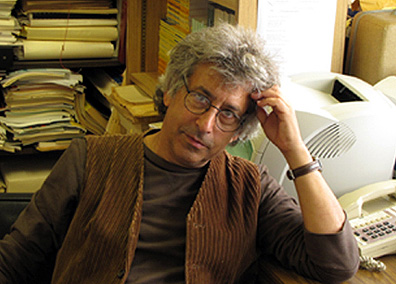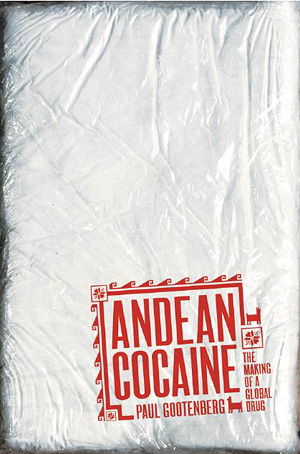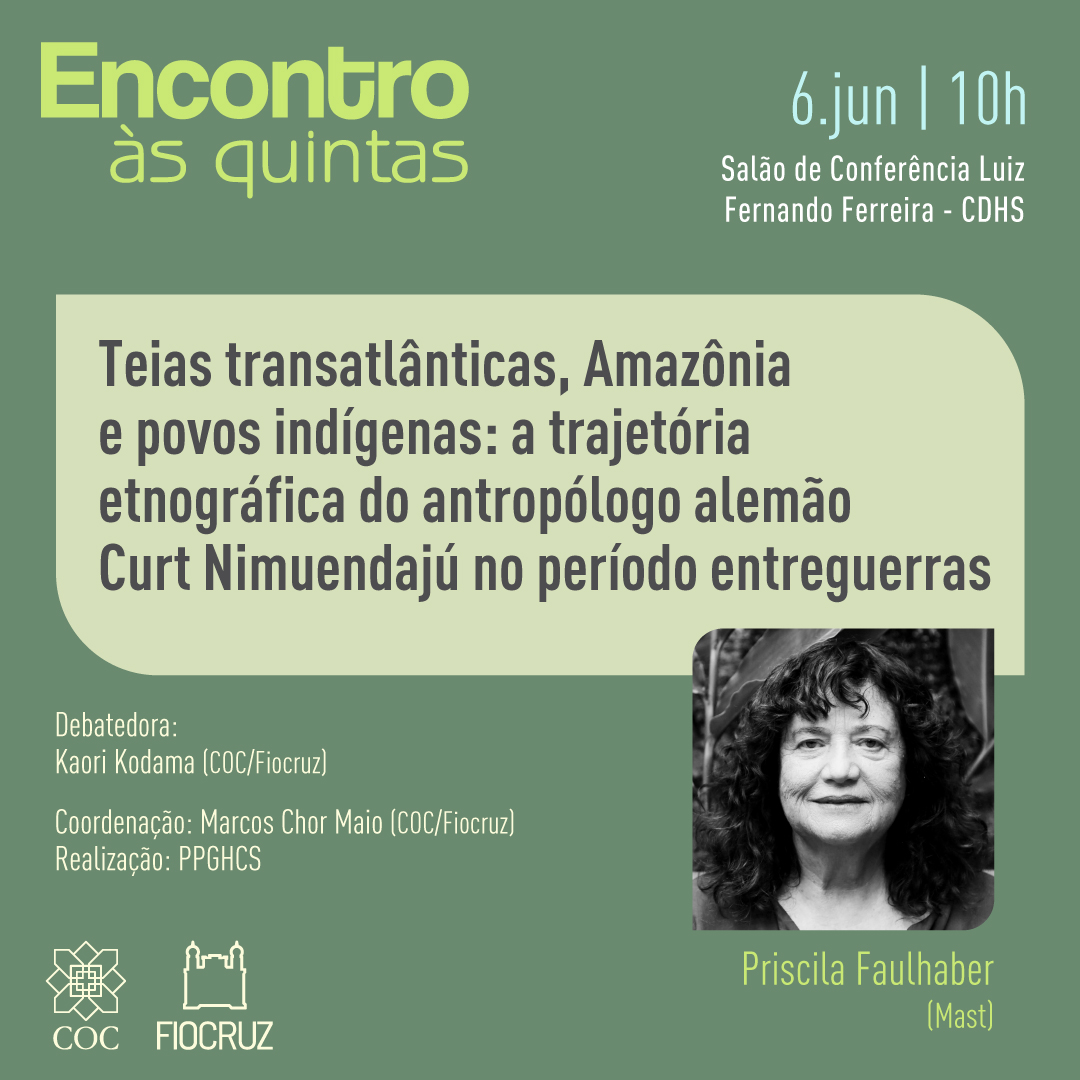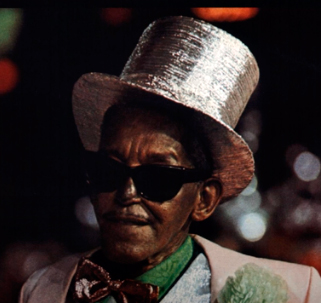August/2013
Marina Lemle
História, Ciências, Saúde—Manguinhos blog

Paul Gootenberg
In this volume of História, Ciências, Saúde – Manguinhos we published the article The use of coca leaves in traditional communities: perspectives in health, society, and culture, by psycologist Ivan Farias Barreto. To discuss the the controversial question of drug consumption and regulation, we invited Paul Gootenberg, SUNY Distinguished Professor of History and Sociology at Stony Brook University (State University of New York) and author of Andean Cocaine: The Making of a Global Drug (University of North Carolina Press, 2009). Stimulated by two questions we proposed, he comments larlegy on war against drugs, its efficacy and consequences.
Historically, governments have been unsuccessfully trying to stop drug consumption and international trafficking. Do you think they would do better by stopping the war against drugs and regulating its market for different types of use (medical and recreational)? Why?
First, let me confess that I am mainly an historian, albeit an historian who has focused a great deal on the history of drugs in Latin America, especially cocaine. This is mainly a political, policy, criminology, or public health issue, though one that hopefully can be informed by longer historical perspectives.
It is true, I believe, that repressive criminalizing have largely failed—though, the United States and Colombia are (differently) claiming successes from so-called “Plan Colombia,” the integrated coca eradication strategy that has reduced Colombian coca plantings and cocaine exports by some 50-percent since 2005. There’s also less cocaine being used and abused now in the United States. However, this one “success” story in more than 40 years since U.S. President Nixon declared a formal “War on Drugs,” mostly across the Americas (Mexico, Peru, Bolivia, Colombia, and now elsewhere) has had a lot of collateral damage—what I prefer in my own analysis to call “blow-back” (deeply negative, unpredicted, uncontained, dangerous side-effects). If the drug war were a drug, the FDA (our U.S. Food and Drug Administration, which regulates medicines) would remove it from the market immediately!
Just to mention a few “blow-backs” directly relating to Plan Colombia. In Colombia, there has been a huge social cost in terms of human rights, the environment, and a massive and tragic problem of violence-induced internal refugees—only now being offset by a stronger sense of urban middle-class security. But others have paid even a steeper blowback price for the U.S.-Colombian policy against cocaine. Take Mexico: focusing the drug war against Colombia during the 1990s onward only fueled the shift of cocaine’s illicit transshipment routes through the Mexican-U.S. border region, which since then, strengthened and emboldening Mexican criminal groups. This shift in power, and the Mexican state’s risky declaration of war on them, has climaxed in horrific and chaotic violence, with more than 70,000 victims since 2007 alone. Weak nations like Honduras, Guatemala, and Haiti are now preferred future sites for scattering trafficker activities. Take Peru and Bolivia: in the 1990s, both countries radically reduced illicit peasant coca production (and associated political threats) in their eastern Amazonian regions, but now, cocaine is returning full-scale again. Peru, like it or not, is again the world’s largest cocaine maker and exporter, and has some rather difficult national choices to make (follow the draconian U.S.-Colombian model, or what?). Tellingly, little of Peru’s cocaine is moving north, but rather moves south, in new routes to new markets. Neighboring Bolivia, under Evo Morales, has decided to take a kind of “time out” from the U.S. drug war, to experiment with their own anti-drug models (some aided, interestingly, by Brazil), at the cost of poor relations with the United States. Ecuador, and likely parts of Venezuela and Brazil, are likely to become new coca growing zones.
Although historically, some Brazilians have enjoyed the pleasures of cocaine, after 2000 this has become a worrisome epidemic. The UN counts Brazil as the world’s second leading cocaine consuming nation in the world, and one suspects, if current trends continue, soon number one (we’ll see if this coincides with your souring world Olympics party). Much of your coke now flows in from Peru and Bolivia. Brazilians are acutely aware of the problems of gangs, corruption, and violence such traffic has aggravated, including now a local re-run of the racialized U.S. “crack” cocaine hysteria of the 1980s. But I don’t think Brazilians have considered that much of this growing drug usage and related social mayhem was historical “blow-back” of the U.S. drug war on Colombia. I suspect that the 1990s rerouting of cocaine supplies via Brazilian ports and cities (in part a trafficker push towards West Africa to European markets), and consumption spillover, came mainly from the intense U.S. pressures against the Medellín and then Cali “cartels,” much like the violent political crisis it caused in Mexico. Argentina and Chile are also snorting up a lot of cocaine, respective to their populations, and Mexican and Colombian and other gangsters moving in, helping to transform them into new drug distribution entrepots. Every nation of South and Central America has considerable public health problems of drug addiction now, usually worst among the most marginal and poor sectors–far more problems than before the drug wars began.
What we are really seeing is not the eradication of cocaine in the twenty-first century, but essentially its “globalization.” Its markets (and its traffickers, growers, and processors) are spreading across all of Latin America. Major new consumer markets have emerged in Africa, Europe (Britain and Spain leading the way), and parts of the ex-Soviet Union—anywhere that inequality and the free market are king. China and other parts of Asia are likely next. If pressures continue against Andean cocaine, in the long-run, cocaine may be superseded by easier to manufacture and distribute “synthetic” drugs—which can be made anywhere—not by any means an improvement for global public health and safety.
And the United States? The U.S. “Drug Czar” and DEA are now claiming an unprecedented public success with lowering cocaine consumption since 2000. They are obviously not counting the ‘blow-back” costs around the globe. Nor at home—one suspects, apart from having by far now the world’s highest rate of incarceration—“sweet land of liberty”—that many of the newer drug threats in the United States, including the still-raging methamphetamine epidemic and unprecedented wave of pharmaceutical drug party abuse among youth, have to do with the long squeeze on imported cocaine. Drug problems are emerging more domestically, in a form of drug “import substitution.” This new phenomenon is a mortal threat to our political habit of blaming foreign suppliers (or darker-skinned minorities) for our drug problems. Indeed, it may turn out to be an existential threat to bloated and bellicose institutions such as the DEA, who will finally begin “talking” public-health and addiction wise about drugs. Another “blow-back” is the U.S. public’s warming up to decriminalized marijuana. The U.S. public is finally becoming very weary of the Sisyphean task of wiping out drugs as a whole. They are deciding, in state after state, most dramatically in Colorado and Washington state’s pioneering effort to legalize recreational marijuana. This is a great ideological blow to our hard-line drug warriors. Paradoxically, this may open up models of more humane and flexible drug policies, even globally. U.S. media images of drugs are now far more relaxed and entertaining, a sign of U.S. culture shift, in hit TV shows like Weeds and Breaking Bad that openly mock the values and aims of the drug-war.
There’s also another political “blowback” effect. For decades, the political elites and countries of Latin America, probably as a legacy of cold war and military alliances, were mainly passive pawns (or oftentimes global diplomatic supporters) of the aggressive U.S.-UN war on drugs. That calculus is swiftly changing and may affect the global drug regime of the next century. Respected Latin American leaders (including Brazil’s former president Fernando Henrique Cardoso) joined a Latin American Commission on Drugs and Democracy (2011) that began to strongly criticize the single-minded U.S. pursuit of drugs, especially at the cost of violent destabilization of regional security and democratization. This realist counter-argument has obviously hit a responsive chord—for example, in now wide open debates about alternative policies,myriad local initiatives in public health and “harm-reduction” policies and decriminalization, such as Argentina’s, rhetorical and legal nationalist defiance of coca in Bolivia, growing Central American doubts about drug militarization strategies, and now Uruguay’s path-breaking attempt to legalize its peaceful pot. Most dramatically, the rebellion at the OAS: in May of 2013, the OAS official released an expert report on hemispheric drug policies, calling for a more flexible response to the problems of violence and public health aggravated by drug trafficking and by U.S.-style drug prohibitions (see also War on Drugs: Report of the Global Commission on Drug Policy, 2011). The ultimate irony here: Colombia’s former defense chief and now president, Juan Manual Santos, an architect of Colombia’s repressive success story. The United States is thus badly losing key support in the drug war.
Some Latin American countries have been developing decriminalization policies. Do you think the region might consolidate a different way to deal with drugs, more aligned to European’s public health approach than to the American’s concept of security threat?

Paul Gootenberg’s book cover
Yes, I believe that a number of influential Latin American countries are vying for alternative policies to the U.S.-UN drug agenda. In part, this movement reflects the political maturation of the region in a larger sense: most countries no longer feel obliged to follow the U.S. line on anything. Mired still in the Middle East, Latin America was put so permanently on the “back burner” of Bush and Obama’s foreign policy (I can’t believe I put those two presidents in the same sentence) that genuine sovereignty, inadvertently or not, has begun to flourish. Latin America’s growing economic ties to both Europe and China are a factor in this political independence, and indeed, distinctive social conditions aside, many Latin American states appear to be moving closer to European social policies than to the pro-market style United States. U.S. overseas drug policy may be a victim, at last, of such developments, and if so, may even help the United States to change, in the long run. A drug-liberalized Canada to the north might also come into play.
Likely the new Latin American policies will be highly diverse and tentative, depending also on whether the United States views them as a threat or not. Mexico will likely remain a conservative outlier, given both its proximity to the U.S. border and the security-conscious fears of its populace and party system. But other countries, likely in the Southern Cone, will likely begin experimenting (as Uruguay and Bolivia are doing now) with the restrictive limits placed by the international (UN-sponsored) drug control regime. For example, Argentina’s Supreme Court, in another sign of democratic strengthening, struck down the country’s criminalizing drug possession laws. “Harm Reduction,” in various forms, is likely to become a priority, although there is no such thing as a pan-European model here. Bolivia will continue its search for legal export products of its coca crops, as an alternative to criminal cocaine, a move which the UN still opposes, though Bolivia won recent recognition of domestic coca use. Decriminalization of cannabis is likely to spread, maybe quickly, in patch-work fashion. Violence-reduction, rather than reduced drug exports or use, is likely to become the public policy priority in a number of countries, as will related issues of community policing and anti-corruption by police, which drug penalties foster. Drug reform will also demand more legitimate rule of law and a stronger, more credible judiciary, thus possibly contributing again to more inclusive, democratic institution-building. Latin American countries, though mostly growing economically, simply cannot afford the financial costs that come with either (U.S.-style) mass incarceration nor mass drug treatment. (Central American nations, like Guatemala, for example, are handing drug addiction programs en masse over to private groups, such as organized evangelical cults.) Other countries may begin to draw on past traditions from European-influenced “social medicine” to provide more drug treatment on demand (even the United States is stated to do so, eventually, under “Obama-Care”), but I cannot say whether users of hard drugs will be de-stigmatized or medicalized, as in programs that prescribe drugs or substitutes to addicts.
There is also a big unspoken issue of creating ‘alternative development” that actually works–a big challenge, which even European and UN development experts haven’t quite solved–,in order to keep marginalized peasants, oppressed urban groups, and shady entrepreneurs (which Latin America has plenty of!), away from the economic temptations of illicit overseas drug trades, which are huge. This may demand wider social reforms, such as substantive land or urban property reforms, greater transparency in the state and the military too. I got a strong sense from the 2013 OAS report that at least these leading authorities grasp the close correlation between the region’s deep historic social inequalities and illicit drug cultures and their propensity for social violence.
A league of nations with less criminalizing drug regimes—New Zealand for example, is now on the forefront—may evolve, counteracted globally by emerging anti-drug regimes in frightened, reactionary places such as the Russian Federation. I wish I knew more about Brazilian politics, because what Brazil does now will be key to wider developments, as the hemisphere’s only other burgeoning political power. Brazil has both a nasty drug scene (as seen in favela and police drug-related violence) and a political commitment to social democratic practices, and Brazil borders a number of volatile drug-producing states, which may soon spill over the blurry Amazonian borders. Perhaps a progressive alternative national or regional drug policy can emerge in Brazil, though at the moment, it seems like a messy mix of public responses. Here, Brazil’s historical and cultural-linguistic ties to Portugal may help, since Portugal has now embarked on Europe’s most comprehensive decriminalization project, so far, without crisis. Ironically, the regional leader at the moment is still Colombia, since Colombian elites feel they have “licked” their drug problem (defined as the older cocaine “cartels”), and feel the need to move on to better things, such as promoting the peace talks with the FARC and tourism to their beautiful nation (tourist fleeing the violence in Mexico!). Whatever really emerges, Latin America has an historic opportunity to grow its international sovereignty and, I believe, make a mark on a new, more humane, and more viable international drug-control system for the twenty-first century.
Read this interview in Portuguese










